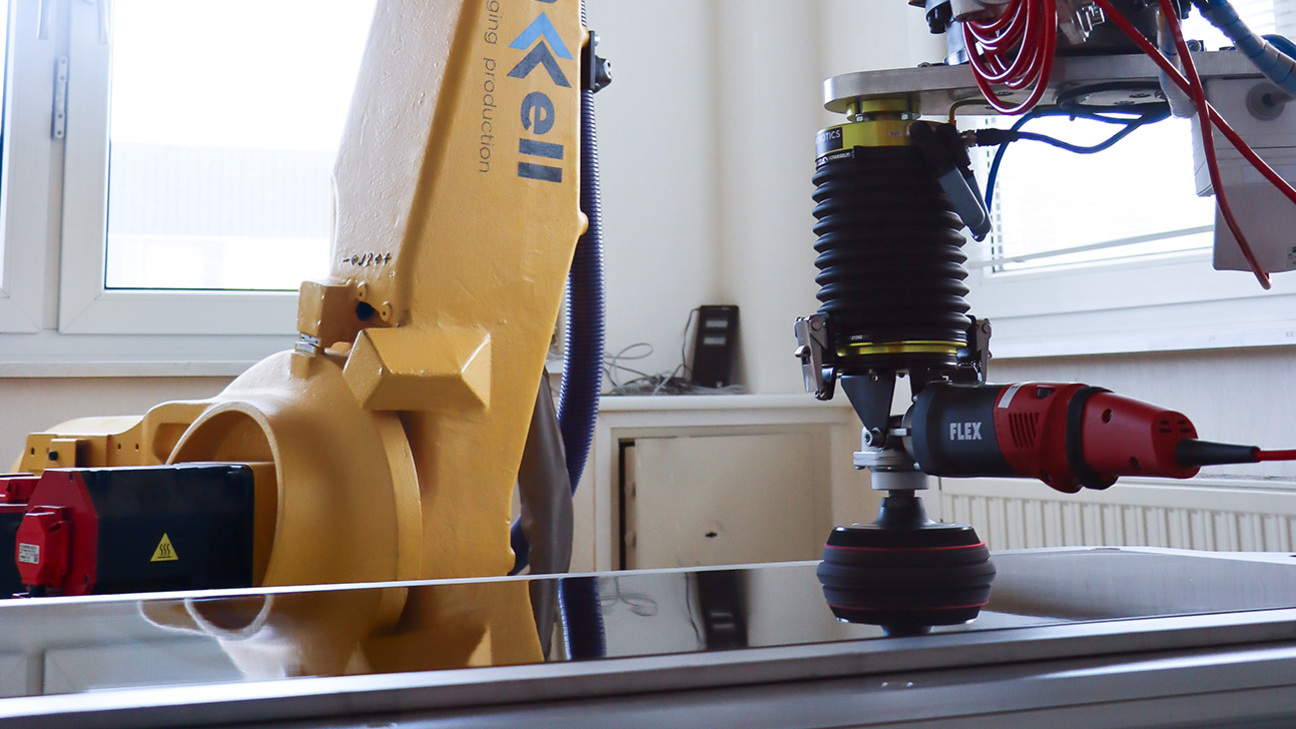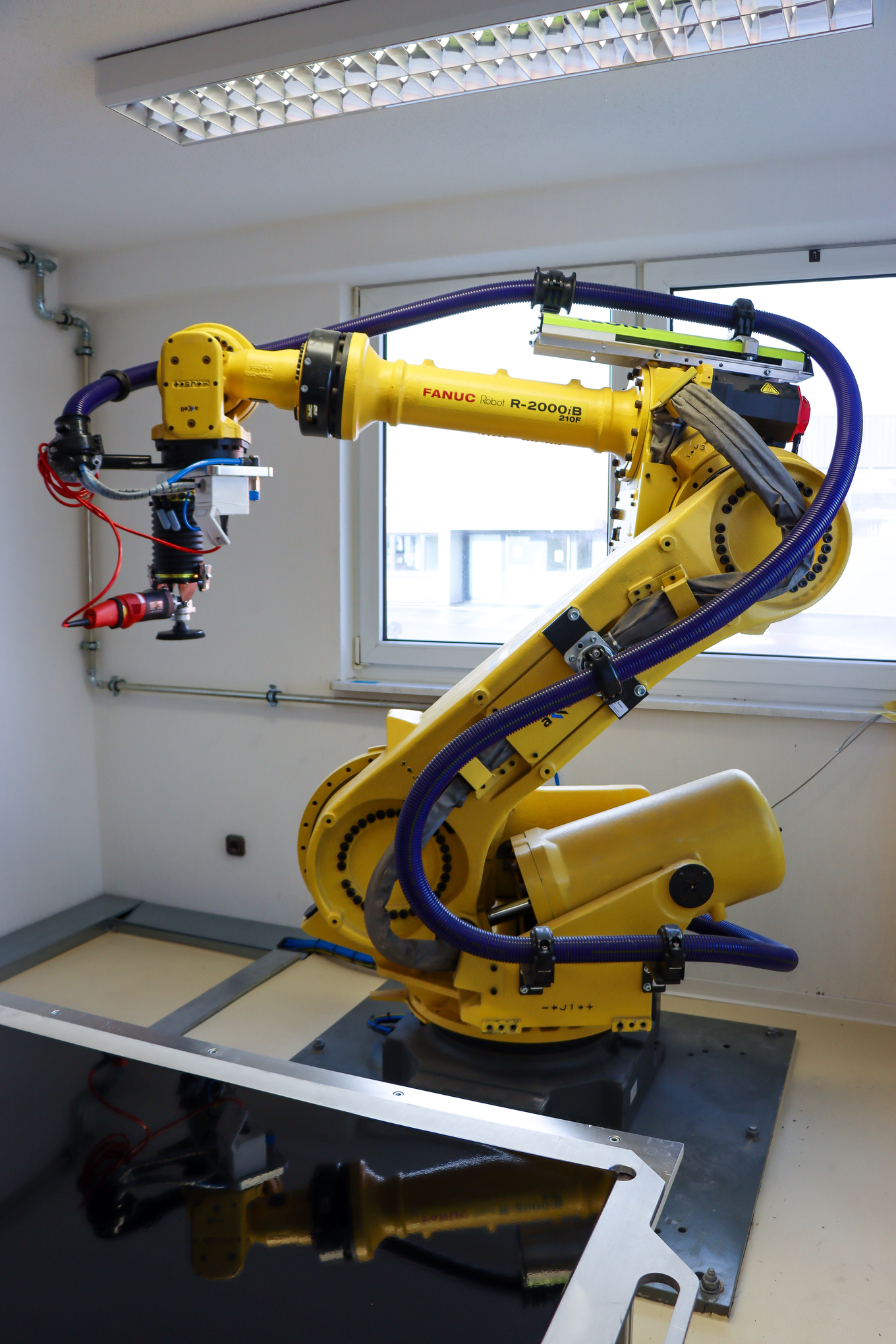We are constantly working on improving our products as well as developing new products to the optimum. Our Research & Development department, together with the Application Technology department, therefore carries out various product tests on a daily basis. The more precise these tests are carried out, the more representative information can be obtained from them. For this reason, we now have an industrial polishing robot on site in Unna for our polishing tests. Our new mechanical colleague is equipped with a force-sensitive Active Contact Flange by FerRobotics. This means that it complies with current industry standards, as used by leading OEMs.
These cookies are necessary for you to navigate the pages and use essential functions. They enable basic functions, such as access to secured areas of the website. The website cannot function properly without these cookies.
- Cookiebot1Learn more about this providerCookieConsentStores the user's cookie consent state for the current domain
- www.koch-chemie.com1fe_typo_userPreserves users states across page requests.
- Cookiebot
These cookies enable a user-specific web page display. Preference cookies allow a website to remember information that affects the way a website behaves or looks. For example, they store your preferred language or the region you are in.
We do not use cookies of this type.
These cookies help us better understand user behavior. Statistics cookies help track how website visitors interact with websites by collecting and reporting information anonymously. It is not possible to draw any direct conclusions about a person.
- Google2Learn more about this provider
Some of the data collected by this provider is for the purposes of personalization and measuring advertising effectiveness.
_gaRegisters a unique ID that is used to generate statistical data on how the visitor uses the website._ga_#Used by Google Analytics to collect data on the number of times a user has visited the website as well as dates for the first and most recent visit.
- Google
Marketing cookies are used to follow visitors around websites.
- YouTube15Learn more about this provider#-#Used to track user’s interaction with embedded content.iU5q-!O9@$Registers a unique ID to keep statistics of what videos from YouTube the user has seen.LAST_RESULT_ENTRY_KEYUsed to track user’s interaction with embedded content.nextIdUsed to track user’s interaction with embedded content.requestsUsed to track user’s interaction with embedded content.yt.innertube::nextIdRegisters a unique ID to keep statistics of what videos from YouTube the user has seen.ytidb::LAST_RESULT_ENTRY_KEYUsed to track user’s interaction with embedded content.YtIdbMeta#databasesUsed to track user’s interaction with embedded content.yt-remote-cast-availableStores the user's video player preferences using embedded YouTube videoyt-remote-cast-installedStores the user's video player preferences using embedded YouTube videoyt-remote-connected-devicesStores the user's video player preferences using embedded YouTube videoyt-remote-device-idStores the user's video player preferences using embedded YouTube videoyt-remote-fast-check-periodStores the user's video player preferences using embedded YouTube videoyt-remote-session-appStores the user's video player preferences using embedded YouTube videoyt-remote-session-nameStores the user's video player preferences using embedded YouTube video
- YouTube
- Unclassified cookies are cookies that we are in the process of classifying, together with the providers of individual cookies.
We do not use cookies of this type.
Managing your cookie settings
Cookies are small text files that can be used by websites to make a user's experience more efficient. The law states that we can store cookies on your device if they are strictly necessary for the operation of this site. For all other types of cookies we need your permission. Some cookies are placed by third party services that appear on our pages. You can at any time change or withdraw your consent from the Cookie Declaration on our website. Learn more about how you can contact us and how we process personal data in our Privacy Policy. Please state your consent ID and date when you contact us regarding your consent.



